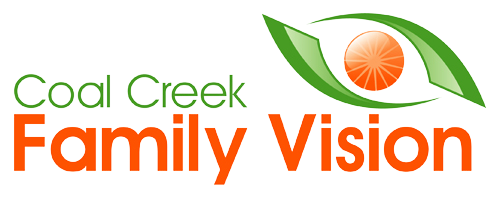Myopia Management
IMPROVING YOUR KID’S QUALITY OF LIFE WITH MYOPIA MANAGEMENT
Myopia Management at
Coal Creek Family Vision
At Coal Creek Family Vision we are honored when parents place their trust in us to care for the eyes of their children.
As we grow during childhood our eyes also grow. If the eye grows too much it will become nearsighted. Through the years when we’ve seen our child-aged patients become nearsighted, understandably concerned parents would ask what can be done to keep their children’s eyes from worsening.
In years past, we could offer little more than a promise to adjust the glasses prescription as the condition of nearsightedness (also known as myopia) advanced to help patients see more clearly. Through the efforts of those behind multiple peer-reviewed scientific studies, interventions have been developed that are proven to slow the increase in myopia as children grow.
What is myopia?
Myopia is an eye condition that typically progresses and gets worse over time. Traditionally it has been referred to as near-sightedness, the inability to see clearly at a distance. These patients have a minus (-) prescription that helps them see more clearly.
What Causes Myopia?
Myopia occurs when the eye becomes elongated, causing the focal point to form in front of the retina causing blur.
Factors that affect a child’s risk for myopia are: 1) genetics- kids with myopic or near-sighted parents are more likely to become myopic, 2) lifestyle- spending more time on near activities like reading or using handheld devices instead of time outdoors increases risk of becoming myopic, and 3) Blurred Vision/Hyperopic Defocus- Improperly focused images can send a signal to the eye to grow or elongate. Traditional eyeglasses only properly focus part of the images we look at while leaving a portion of what we view out of focus. This can stimulate an increase in myopia in children.
What is Myopia Management?
There are different types of myopia management. Your child’s optometrist will go over different treatment options with you and your child to best slow down the progression of myopia. It has been found that myopia management treatment plans help to reduce your child’s risk for long term eye conditions and the need for high prescription vision correction. The earlier a child becomes nearsighted and the faster the myopia progresses, the more severe it will become in adulthood.

Your child’s doctor will monitor the efficacy of treatment and any potential side effects. Even if your child is compliant with one type of management option, myopia can still be found to increase. When the doctor assesses these changes they may recommend changing parameters of treatment, or adding another treatment option in addition to the current one. This can help to slow down the rate of change of myopia and to decrease the risk of eye conditions related to high myopia.
Why it Matters
Why Should I Choose Myopia Management
For My Child?
In the 1970s, 25% of Americans were nearsighted. Now more than 40% of Americans are nearsighted. It is predicted that by 2050 more than 58% of US population will be myopic.
Myopia is associated with so much more than just blurry vision. The more the eye elongates, the more a child becomes myopic. A full grown eye is about 24 mm long, if myopia is -6.00 D and / or the axial length is 26mm it is considered severe myopia. The higher the myopia, the increase in risk of eye conditions such as glaucoma, maculopathy and retinal detachments also increase. These risks begin to increase even at low levels of myopia.
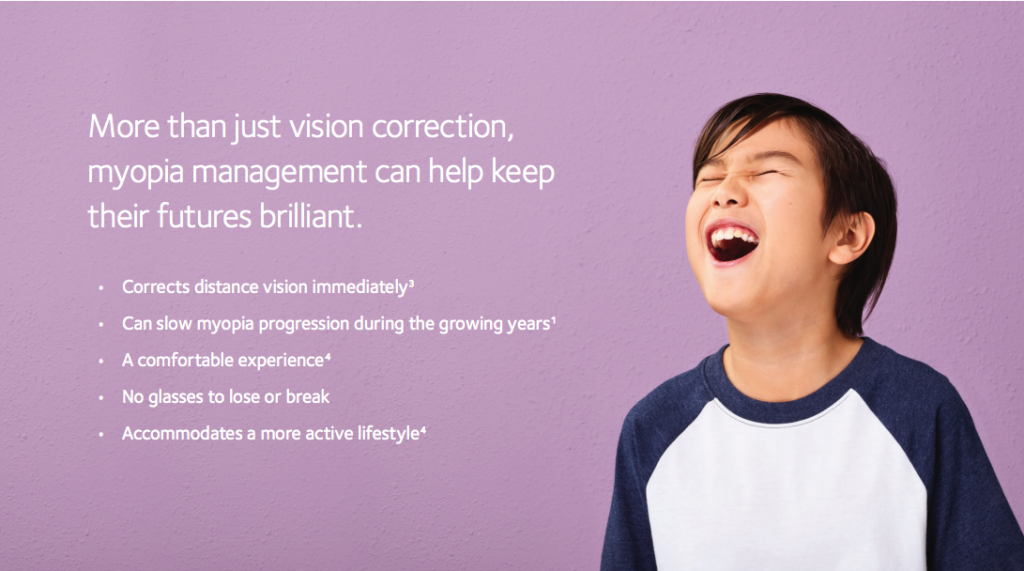
While myopia management is not guaranteed to stop the increase in your child’s nearsightedness, the options we offer have been proven in scientific studies to significantly reduce the rate of myopia progression and the final degree of myopia. Reducing the amount of myopia developed can have a substantial impact on quality of life. Additionally, individuals with lower degrees of myopia are at substantially reduced risk of developing eye disease later in life. This includes reduced risk for glaucoma, myopic macular degeneration, and retinal detachment which all carry substantial risk for permanent vision loss. Lowering the degree of myopia also increases the likelihood that your child will have options such as laser vision correction when they reach adulthood.
Why Should I Choose Coal Creek Family Vision For Myopia Management?
At Coal Creek Family Vision, we have made investment in both time and equipment to ensure that our Myopia Management program offers the latest science-backed methods to reduce the change in your child’s prescription and to monitor the effectiveness of our therapies. We monitor effectiveness of treatment by tracking both changes in prescription and the axial length of your child’s eye (a method five times more accurate than monitoring prescription alone). We are able to monitor and chart axial length through utilization of the Myopia Master, a cutting edge device that will measure the length of the eye with great precision and allow for reports that are customized to your child so that you have a clear understanding of the efficacy of treatment.
When to start Myopia Management
There are multiple risk factors involved in determining if your child is a fast progressor for myopia. These include genetics, lifestyle, prescription change, axial length changes and age of onset. It is important to have your child’s vision and ocular health checked at least every year to assess stability/ progression over time. Even if your child is not mentioning that it is more difficult to see the board in class, their axial length can still be changing.
If vision and axial elongation are changing, every bit of change increases a child’s risk for long-term conditions, especially at a younger age. At Coal Creek Family Vision we will assess the above risk factors and evaluate the stability / progression of your child’s vision and axial length to make appropriate recommendations. Our doctors partner with the child and family to customize a treatment plan based on risk, change and lifestyle.
How does myopia management work?
ATROPINE
Atropine is a pharmaceutical agent that has been used as a diagnostic tool in routine eye exams for decades. This common eyedrop can also be used off-label as an effective way to control myopia. Initial research reported the reason atropine drops controlled myopia was due to the atropine drops paralyzing the focusing muscles of the eye. Current findings maintain the atropine molecules are affecting a receptor in the tissue of the back of the eye, signaling the eye to stop growing excessively. While an effective modality, this mechanism continues to be studied around the world.
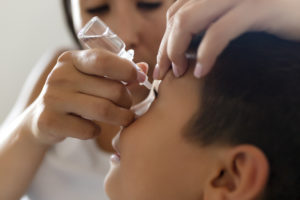
High-DOSE ATROPINE
The use of 1% concentration atropine eye drops provide enhanced myopia management benefits, but can have greater side-effects.
LOW-DOSE ATROPINE
Low-dose atropine refers to concentrations between 0.01% and 0.05%. Through research studies*, the off-label use of these low-dose concentrations provide the best balance between slowing myopia progression and reducing side-effects.
WHAT ARE THE COMMON SIDE-EFFECTS OF ATROPINE?
Common side-effects of atropine include light sensitivity due to increased pupil size, and difficulty focusing at near. These effects are more prominent in higher concentrations. Normally for those using low-dose atropine to manage myopia, most patients do not experience these side-effects.
It is important to have a pair of sunglasses to offer additional UV protection since more light will get into the patient’s eyes. You can help mitigate these side-effects with glasses that darken when exposed to sunlight and lighten indoors. Also a progressive or anti-fatigue lens aids in focusing at near if needed.
WHAT DOES OFF-LABEL MEAN?
Off-label prescribing is when a physician gives you a drug that the U.S. Food and Drug Administration (FDA) has approved to treat a condition different than your condition. This practice is legal and common practice.
Contact Lenses
There are many advantages to wearing contact lenses besides myopia control. Contacts can help to improve a child’s self esteem. Choosing the right modality of contact lenses for your child is dependent on lifestyle, comfort and anatomy of the eyes. The main purpose of myopia control contacts are to reduce the rate of change over the years, most often there is an added benefit of glasses free vision. There are two main types of contact lenses that are effective for myopia control: orthokeratology and peripheral defocus soft contact lenses.
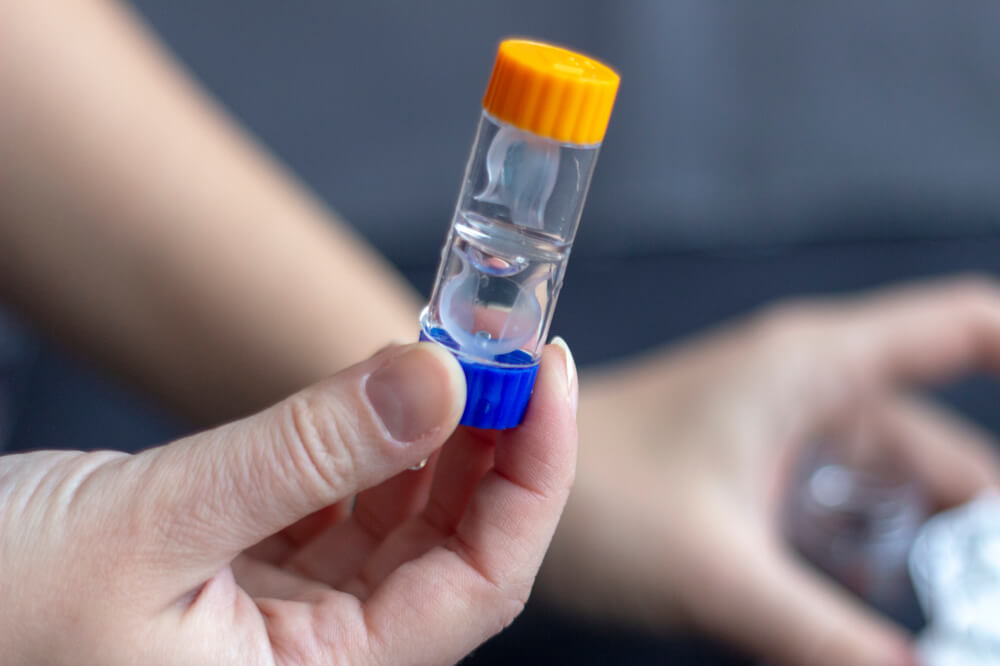
ORTHOKERATOLOGY
These special lens retainers worn during sleep have been shown to change the way light focuses on the retina (the lining inside of the eye that collects information necessary for sight). This altered focus, known as peripheral myopic defocus, reduces the stimulus that is thought to cause the eye to grow. These custom lenses are worn 8-10 hours per night to gently and temporarily reshape the front surface of the eye. Our goal is to reduce the rate of change in vision and axial length, but most often patients have the added benefit of not needing to wear any correction in the daytime to see well.
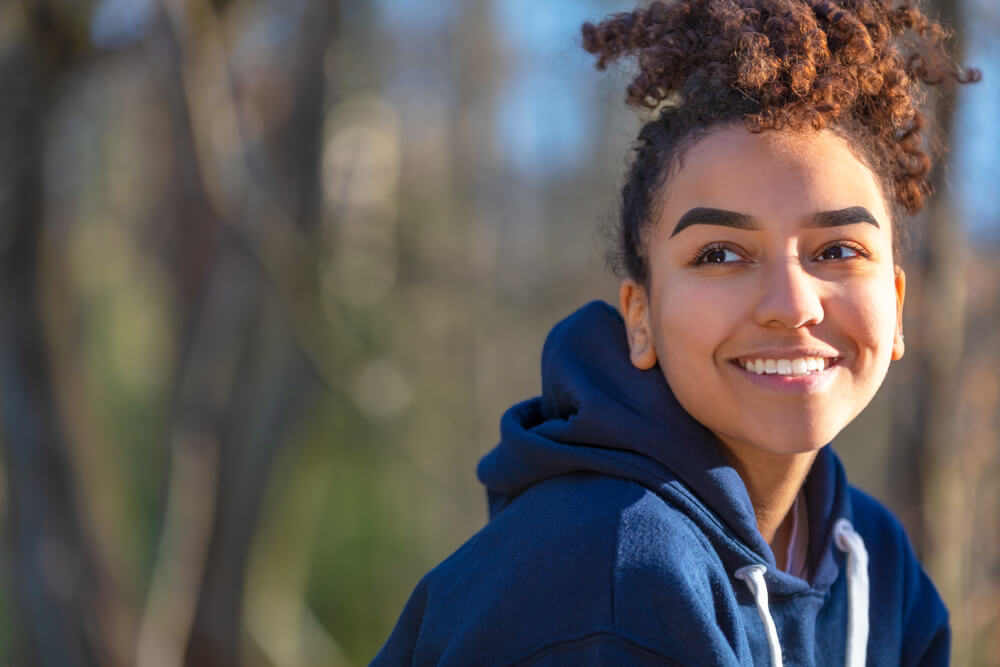
Peripheral Defocus Soft-Contact Lenses
The design of these lenses are similar to orthokeratology lenses in that they helps focus the light centrally and correct for the hyperopic defocus. Soft contact lenses are worn daily. Normally we use MiSight lenses that have been FDA approved for myopia control, but other types of soft lenses can be used depending on the needs of the patient. MiSight lenses are daily disposable lenses which help with safety and compliance. These lenses are effective at controlling myopia but are not as customizable as orthokeratology lenses.
SPECTACLE LENSES
Traditional spectacle lenses help correct the vision in a myopic child but do not help to slow down the rate of change. Newer lens designs have been researched to help slow down the rate of progression, especially for those who are not ready or cannot wear contact lenses. None of these special lens designs are currently available in the U.S., but we anticipate they will be available in the next few years.
frequently asked questions
Myopia Management
At Coal Creek Family Vision patients and their parents commit to myopia management for one year. Typically vision, and thus axial length, stabilizes in early to mid-20s. Ideally it is important to continue with myopia management at least until the patient is out of their growth spurt years since this is when we are expecting vision and axial length to continue to increase.
Over the course of the year, we have periodic check-ins to monitor the efficacy (refraction and axial length) and compliance of treatment. The optometrist also ensures that there are no unexpected side effects from treatment.
Myopia causes visual dysfunction that can affect school and sports and may lead to potential blinding eye diseases and needs special testing, frequent office visits and optical devices. Unfortunately neither insurance companies nor vision plans consider myopia a medical diagnosis. Therefore myopia management is not covered and is an out-of-pocket expense.
Further information can be found HERE in the IMI White Papers.
It all starts with your child’s annual eye exam where we will do a thorough health & wellness check as well as review your child’s current prescription needs. During this appointment we will take some additional measurements to determine if Myopia Management would be an appropriate treatment path and answer any additional questions you may have.
explore research & Journal Articles
treatments backed by science
- The Contact Lens and Myopia Progression (CLAMP) Study: Design and Baseline Data
- The Longitudinal Orthokeratology Research in Children (LORIC) in Hong Kong: A Pilot Study on Refractive Changes and Myopic Control
- A Randomized Trial of the Effects of Rigid Contact Lenses on Myopia Progression (Walline, Mtti, Zadnik)
- Retardation of Myopia in Orthokeratology (ROMIO) Study: A 2-Year Randomized Clinical Trial
- Corneal reshaping and myopia progression
- Five-Year Clinical Trial on Atropine for the Treatment of Myopia
- Atropine for the treatment of childhood myopia: safety and efficacy of 0.5%, 0.1%, and 0.01% doses (Atropine for the Treatment of Myopia)
- Two-Year Clinical Trial of the Low-Concentration Atropine for Myopia Progression (LAMP) Study
- Three-Year Clinical Trial of Low-Concentration Atropine for Myopia Progression (LAMP) Study: Continued Versus Washout
